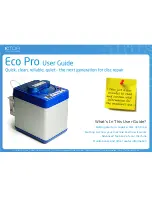
rapidCAST User’s Guide
March 2018
EAR-Controlled Technology Subject to Restrictions Contained on the Cover Page.
Page
69
Tension Arm Calibration
Tension Arm calibration is a process that captures the Tension Arm’s operating characteristics and saves
these parameters in the Control Module. The Tension Arm is calibrated at the factory, and in most cases
re-calibration is rarely needed.
However, calibration should be performed if any of the following conditions apply:
•
The Tension Arm or its Encoder is removed, replaced, or mechanically adjusted.
•
The desired line tension for the Tension-Controlled Payout needs to be defined.
•
The Control Module is paired with a different Winch.
•
There is a discrepancy between the Tension Arm’s reported position in the software and its true
position.
The fastest way to verify the Tension Arm’s calibration is to remove all line tension from the arm, such
that the arm is resting freely against its lower hard stop.
When the Tension Arm is at its lowest position, the angular gauge in the Interface Software should show
the Tension Arm pointing at the far edge of the red zone. If the Tension Arm is not depicted at this posi-
tion when the arm is fully relaxed, calibration is needed.
To create a new calibration:
1. In the rapidCAST Interface software, click the Maintenance tab and then click the Calibration
button (see Figure 39, page 71).
2. In the Calibration window, click the Save Backup File button to save the current (incumbent)
calibration to a file on the PC. Use the Browse File button to load the settings from a previously-
saved calibration file, if desired.
3. Safely stow the probe. Untie the line from the probe and ensure that the line is not attached to any
objects.
















































